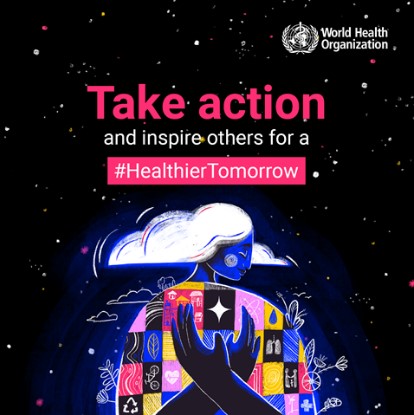SABRINA - THE ROLE OF CYCLING ON INTERNATIONAL DAY OF SPORT AND WORLD DAY OF HEALTH
06-04-2022
In 2013, The United Nations General Assembly accepted the Resolution (A/RES/67/296), establishing the International Day of Sport for Development and Peace which takes place annually on 6 April. The main goal is to raise awareness of the potential sport has: “Due to its vast reach, unparalleled popularity and foundation of positive values, sport is ideally positioned to contribute towards the United Nations’ objectives for development and peace.”
On the United Nations webpage, we can read “Sport has the power to change the world; it is a fundamental right and a powerful tool to strengthen social ties and promote sustainable development and peace, as well as solidarity and respect for all.” The 2022 theme is “Securing a Sustainable and Peaceful Future for All: The Contribution of Sport,” which creates an opportunity for the Day’s celebrations to promote the use of sport as a tool to advance human rights and sustainable development. Under this theme, UN Headquarters in New York will recognize the role of sport in addressing the climate crisis and will highlight actions to lower greenhouse gas emissions and mitigate against climate change.
The celebration of the International Day of Sport is followed by the annual celebration of the World Health Day on the 7 April. The date marks the anniversary of the founding of the World Health Organization (WHO) in 1948. Each year the day draws attention to a specific health topic of concern to people all over the world. During a pandemic, a polluted planet, increasing diseases like cancer, asthma, heart disease, on World Health Day 2022, WHO will focus global attention on urgent actions needed to keep humans and the planet healthy and foster a movement to create societies focused on well-being. WHO estimates that more than 13 million deaths around the world each year are due to avoidable environmental causes. Over 90% of people breathe unhealthy air resulting from the burning of fossil fuels. Through the Our planet, our health campaign, WHO will urge governments and the public to share stories of steps they are taking to protect the planet and their health and prioritize well-being in societies.

In the SABRINA project, we believe cycling can offer many answers and solutions to the challenges mentioned above. As a result of different project activities, we have prepared Fact sheets, divided into three groups.
• Typical cycling infrastructure risks.
• Cycling infrastructure countermeasures and development or improvement strategies (“solutions”).
• Environmental, health, and other not directly safety-related aspects of cycling and the development of infrastructure (“positive effects”).
Positive effects fact sheets amongst others focus on energy and resources, mental and physical health, and social inclusion. If we just focus on health, studies show cycling improves cardiovascular functioning, high blood pressure, helps with weight management, it improves cardiorespiratory health, physical activity like cycling reduces stress and anxiety, etc. Cycling brings so many positive things, however, if we want to reach more cycling, we need to make sure safe cycling infrastructure is available. Check out the summary of infrastructural risks, solutions and positive effects of cycling HERE.
![]()



